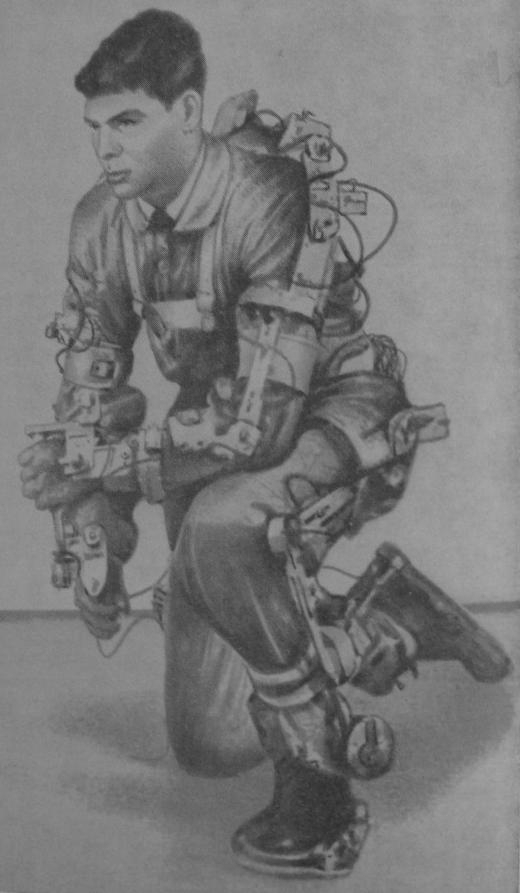In 1963 N. Mizen (Cornell Aeronautical Laboratory, Buffalo NY) has developed a passive exoskeleton, which was able to register (with big precision) the movements of all parts of the body except the neck, fingers and toes.[1]
The obtained data are very considerable for the development of active exoskeletons (from the standpoint of the feasibility of the human’s motion activity in such structure).[1]
References:
1. Вукобратович М. Шагающие роботы и антропоморфные механизмы / М. Вукобратович. — Москва: Мир, 1976. – 544с.
2. Patent US3449769 – POWERED EXOSKELETAL APPARATUS FOR AMPLIFYING HUMAN STRENGTH IN RESPONSE TO … – Google Patents. — Mode of access: http://www.google.com/patents?id=xSdyAAAAEBAJ&printsec=frontcover&dq=3449769&hl=en&sa=X&ei=cavcT_CPOIvDtAb-qIG5DQ&sqi=2&ved=0CDUQ6AEwAA.
3. THE MYOTRON — A SERVO-CONTROLLED EXOSKELETON FOR THE MEASUREMENT OF MUSCULAR KINETICS. — Mode of access: http://www.dtic.mil/dtic/tr/fulltext/u2/833791.pdf.
4. Springer Handbook of Robotics / ed. Bruno Siciliano, Oussama Khatib. – Berlin Heidelberg: Springer-Verlag, 2008. – 1611 p.
5. HowStuffWorks “The History of Human Augmentation”. — Mode of access: http://science.howstuffworks.com/exoskeleton1.htm.
6. Mizen Engineering Expert Witness Home. — Mode of access: http://www.mizenengineering.com/.
